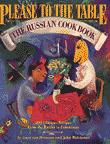 This past Saturday (May 17), KZ "ethno-pop" trio Urker released Tolgau, their first album since 2004's Best of Urker. According to the press release on the group's website, the 11 new songs on the album, including the wholly instrumental title track, are the result of two years of work for songwriting duo Aidos Sagat (music) and Nurlan Alban (lyrics). In the meantime, Aidos has been busy with charitable work, teaching show business management at KIMEP and is also a member of the national Author's Copyright Council.
This past Saturday (May 17), KZ "ethno-pop" trio Urker released Tolgau, their first album since 2004's Best of Urker. According to the press release on the group's website, the 11 new songs on the album, including the wholly instrumental title track, are the result of two years of work for songwriting duo Aidos Sagat (music) and Nurlan Alban (lyrics). In the meantime, Aidos has been busy with charitable work, teaching show business management at KIMEP and is also a member of the national Author's Copyright Council. The band has been leading up to the album release with a series of live performances -- Urker's Nauryz concert was their first live outing in five years, and on May 8 they played at London's Ministry of Sound music club, their first time to play Britain (Tolgau was recorded & mixed in Almaty, but mastered in a London studio) and their only European date for all of 2008.
The band has been leading up to the album release with a series of live performances -- Urker's Nauryz concert was their first live outing in five years, and on May 8 they played at London's Ministry of Sound music club, their first time to play Britain (Tolgau was recorded & mixed in Almaty, but mastered in a London studio) and their only European date for all of 2008."Mature" is a word that the press release uses to describe this album, rightly so. The first 'single' from the CD is Asel, and it's pretty darn good. Oh, it definitely sounds like Urker, but the video and a something about the way it sounds make me think of Bryan Ferry and Roxy Music -- or maybe it's just the skinny 1980s ties.
Urker played a hour-long CD release concert on Saturday at Almaty's new mega-mall (aptly named MEGA), outside the Meloman music shop. Mashenka of Getting Kazakhified was there, and says that performing live, the band rocked!, a lot harder than they do on CD. (Read about her interview with Roksonaki, too, while you're over at her site). According to the Urker website, the band is off to Shymkent (May 24) and Karaganda (June 18) for personal appearances, probably at Meloman stores in those cities.
The one thing I don't have is a source for getting the CD unless you're within driving/horseback/walking distance of a MEGA mall. When I find out how to get a copy, I'll let you know too.
 Urker live at the 2008 Nauryz party in Almaty
Urker live at the 2008 Nauryz party in Almaty



















